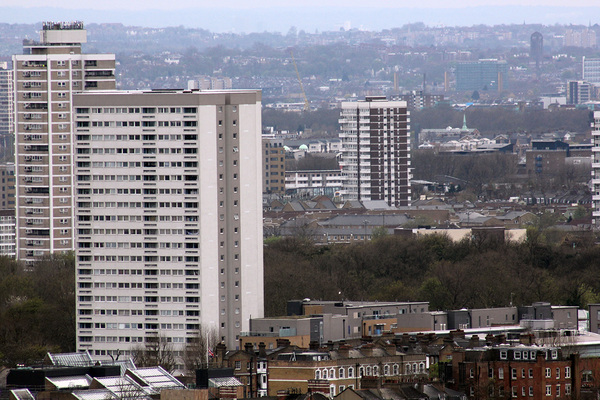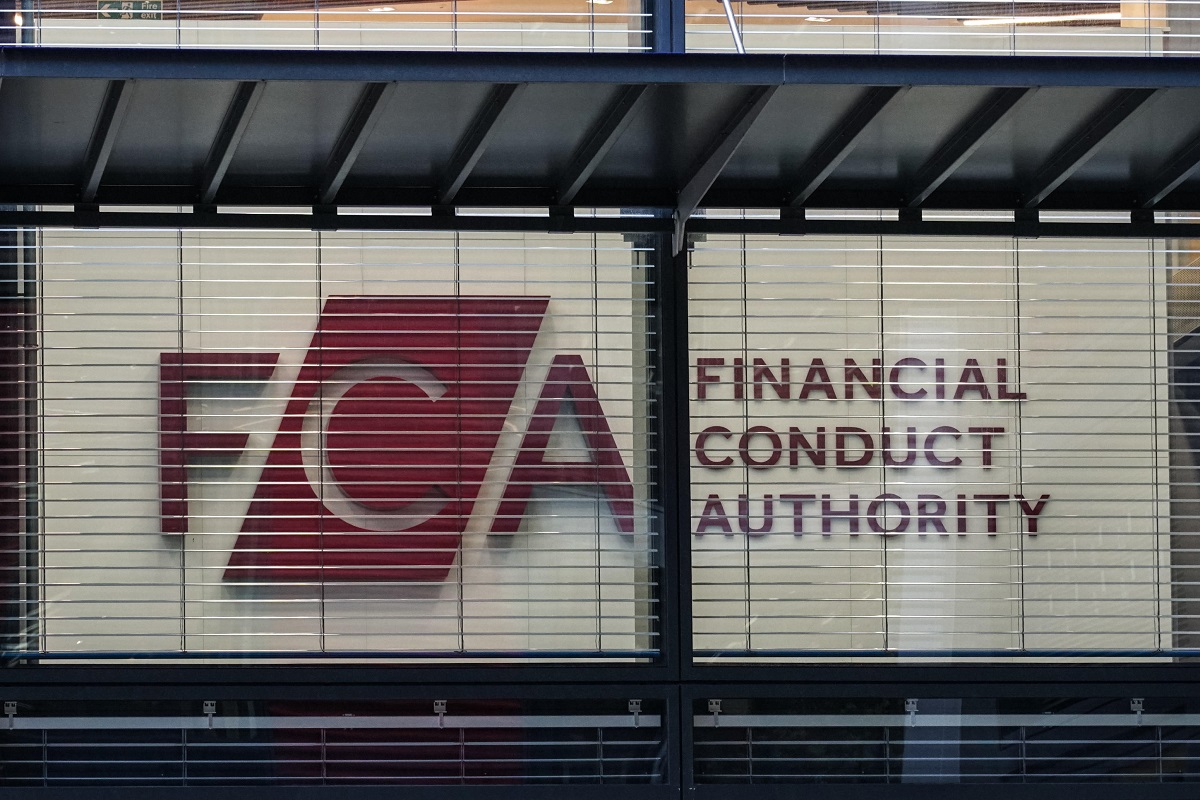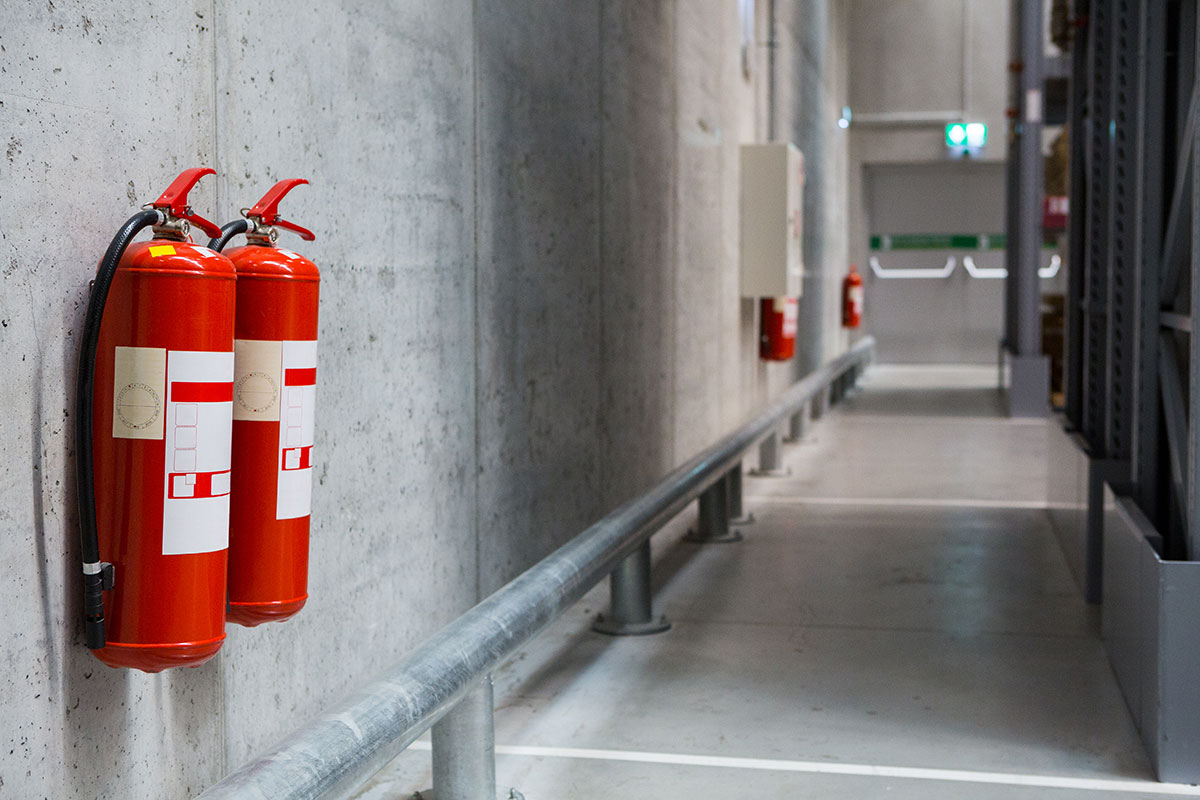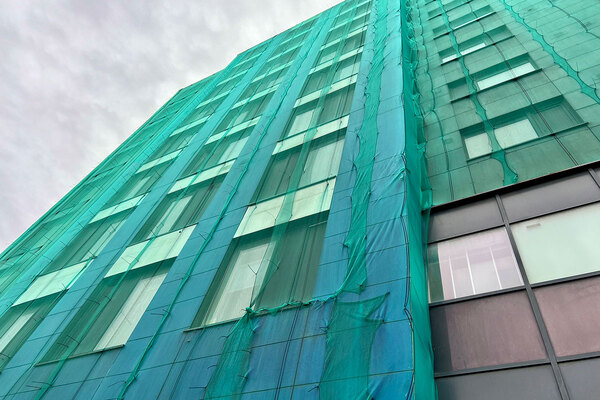The building safety crisis: where are we now?
A package of reforms aimed at protecting leaseholders from crippling remediation costs passed through parliament earlier this year. Yet, while progress has been made, huge issues remain. Jack Simpson investigates
When setting out his plan to fix the building safety crisis in January, former housing secretary Michael Gove vowed that “no leaseholder living in their own flat would have to pay a penny to fix unsafe cladding”.
Instead, he wanted developers to cough up. A deal was finally struck in April, with developers agreeing to fund or self-remediate any “life-critical fire safety work” on buildings they had built over the past 30 years.
As part of the agreement, “life-critical fire safety work” went beyond cladding removal to include work such as fitting missing fire breaks, which had previously been outside government funding programmes.
Where a developer cannot be found, the freeholder should cover the costs, if it has the resources to pay. Where neither a developer nor a freeholder can pay for the work and it cannot be reclaimed from another party, such as a manufacturer of the cladding products, there will be a £10,000 cap on the amount a leaseholder has to pay (£15,000 in London).
But while these protections have helped to alleviate some of the immediate stresses, it remains to be seen quite how many buildings will be left with no freeholder or developer willing or able to stump up.
If it proves to be a large amount, leaseholders will still be paying considerable capped fees and it is unclear whether a new pot of government cash being put together through industry contributions will be enough to fill the substantial gap in funding left after the caps are applied. Work will not go ahead if it does not.
The protections also exclude huge swathes of leaseholders. First, those who live in buildings below 11 metres will be excluded from any protections, and still face eye-watering bills in the tens of thousands in some instances. This means that even if a building below 11 metres has the same aluminium composite material (ACM) cladding as Grenfell, they will have no support to pay for its removal – despite government-backed guidance explicitly suggesting that such buildings should be fixed.
The government did promise to look on a case-by-case basis, but Inside Housing has been contacted by several sub-11-metre leaseholders who are still in the dark over whether they will be protected.
Buy-to-let landlords with more than three properties will also miss out. This means that small-time landlords could face huge remediation costs on all of their properties, sometimes more than tens of thousands of pounds for each flat.
Enfranchised leaseholders, who own part of the freehold of their block, are also currently not protected. A ‘call for evidence’ looking at protections for these leaseholders is currently open but this could still take months, if not years.
Clive Betts, chair of the Levelling Up, Housing and Communities Committee, also pointed out that social housing providers were currently missing out.
“There is a big gap [in protection] around social housing,” he explains. “There’s now a perfect storm building in social housing, where the money that was earmarked for new build is just going to be sucked away by building safety work, net zero work, and the rent cap as well.”
Developers’ pledge

Since the Grenfell Tower fire in June 2017, the government has been clear that developers and building owners should “do the right thing” and pay for remediation costs. Under Mr Gove, the government’s position moved from telling to forcing. As of August, 49 large developers had signed the agreement that committed them to fixing their blocks. Some signatories have gone further than others in acting on these pledges.
“It is a mixed bag. Some have been very proactive and are engaging with us and have committed to cover everything needed,” says one housing association source. “But we haven’t had contact from everybody yet.”
In July, the government published the contract, with Mr Gove’s caretaker replacement, Greg Clark, giving those that pledged one month to finalise terms. A month has now passed, Mr Clark has left post, but the contract has yet to be signed by anyone.
Inside Housing understands that this delay is partially because of the clauses in the contract which could leave developers vulnerable to “open-ended commitments” in terms of costs. But it has led some campaigners to worry that it could stop progress.
“My general impression is that the developers are playing for time. They hope to get a better deal than was offered under Michael Gove,” says Liam Spender, a lawyer and leaseholder who works with the charity Leasehold Knowledge Partnership.
Lawyers and consultants have raised issues with the contract itself, which states that to assess what work is needed, a check of the building following the principles of PAS 9980 is required.
PAS 9980 is a new piece of guidance for external wall surveys which aims to provide a more proportional approach to building safety and assess buildings on risk rather than just assessing the presence of combustible materials. It was brought in to move away from the thinking that all buildings with fire safety defects must be remediated.
Mark London, partner at Devonshires, says that the government has made the naïve assessment that PAS 9980 will in all cases provide an accurate statement of what needs to be done, when, in fact, it is still highly subjective. He describes an increasing trend where developers appoint their own fire engineer to carry out a PAS 9980 assessment in order to determine whether any work is required to make the building tolerably safe. He says these developer-commissioned assessments are often “wholly inadequate”, and often arrive at the conclusion that no or minimal work is required.
PAS 9980 is only intended to form the basis of an agreed (yet voluntary) approach to risk-assessing an external wall system under the Fire Safety Act 2021. It has no legal standing, and cannot usurp statutory obligations, or obligations in the contract that require buildings to comply with building regulations.
“Where our clients have entered into contracts, they are entitled to the building that they paid for,” he says. “In most cases, PAS 9980 does not end the argument, it simply adds another layer to it.”
He says that most contractors and their insurers are reluctant to go to trial, and nearly all cases are settling either at mediation or before trial, often for very significant sums of money.
However, while housing associations and some conscientious landlords can take this route, the majority of private freeholders will not. This means many buildings may not get the full suite of safety works to meet building regulations, and this could cause issues down the line.
In other cases, developers are refusing to take action, or have folded companies or special-purpose vehicles to avoid liabilities. The government has vowed to restrict planning permission for uncooperative developers and has also set up a taskforce in the Department for Levelling Up, Housing and Communities to tackle developers trying to swerve their responsibilities.
Building Safety Fund
The government has been reluctant to provide public money to fix the building safety crisis. It took a year to provide cash to remove ACM cladding from social blocks, and then a further 12 months for private blocks.
However, in March 2020 came the biggest funding intervention, when then-chancellor Rishi Sunak vowed to make sure “all unsafe cladding was removed from every building above 18 metres”, with a new £1bn Building Safety Fund for the removal of dangerous non-ACM materials. But the fund has not matched Mr Sunak’s aims and has been plagued by issues.
An investigation by Inside Housing earlier this year revealed that leaseholders had waited more than 18 months for applications to be seen, while those that had funding agreed saw projects paused because money was not released quickly enough from the fund.
Currently, only 50 projects with cash from the Building Safety Fund have been completed, two years after it was launched, with only four receiving complete sign-off by building control. And, while around £1.5bn has been allocated, only £588m has been handed out. Many of the issues have been down to huge demand – there have been 2,824 registrations – and lack of resource to process them.
This is only set to get worse with the extension of the £1bn fund, and when the multibillion-pound fund for buildings between 11 and 18 metres opens.
To give a sense of just how much resource these extra funds will require, the Greater London Authority estimates that the 11-18 metre fund may cover 3,000 buildings in London and would require 185 additional staff at the Greater London Authority to manage.
The prospectus for the £4.5bn extended fund now also requires every application to have a PAS 9980 assessment. Ben Kelly, senior building safety consultant at Altair, has said this is severely delaying the progress of applications, with some of his clients being quoted a six to eight-month wait for a check, due to the critical national shortage of competent fire engineers.
There are developing issues, too. Giles Grover of the End Our Cladding Scandal campaign says the new developer pledge scheme has inadvertently caused delays to, or completely halted, work at some blocks that have had funding approved.
“After two years of waiting, some buildings have been told, ‘You’ve got funding, but hang on a minute because of the Building Safety Fund rules saying you have to explore all routes for recouping money before accessing funds, you have to go through the developer route,’” he says. “That has caused more delays.”
EWS1 and lending on flats

One of the biggest issues is the impact the crisis has had on the flat-sale market. The dangerous materials on buildings and, in turn, potentially affecting those living in the homes, has meant banks have been largely unwilling to provide mortgages on these properties. This has left flats unsaleable and leaseholders trapped.
Fuelled by the introduction of the controversial EWS1 form and the Consolidated Advice Note, which said that all dangerous materials should be removed, regardless of height, there has been widespread paralysis in the market. This has reached its peak in the past two years.
But there are some glimmers of hope. Last year, the Royal Chartered Institution of Chartered Surveyors (RICS) brought in new guidance for banks that called for banks to reduce the number of EWS1 checks needed for buildings under 18 metres. After initial reluctance from banks to follow this, Mr Gove’s scrapping of the Consolidated Advice Note appears to have had some impact.
Mr London has seen a drop-off in demand for EWS1.
“I think the industry has taken seriously the government’s firm view that you shouldn’t be asking for them on buildings below 18 metres, and even then, only when there is some form of cladding,” he says.
There was also a piece of guidance published in July stating that banks should agree to provide mortgages on properties if a fully funded remediation plan was in place. This was backed by six main banks: Barclays, HSBC, Lloyds Banking Group, Nationwide Building Society, NatWest and Santander, as well as trade bodies.
However, we have been here before. There have been many times when an announcement by the government or RICS to increase the number buildings that can be lent on are rejected by banks. Some banks Inside Housing spoke to said that they would be willing to lend if a fully funded remediation plan was in place, while others have yet to change their policies.
“It does feel like UK Finance and the Building Societies Association have been pushed into making positive-sounding statements, but again, the reality on the ground is not matching the rhetoric,” says Mr Grover.
Even if a funded remediation plan is in place, securing an agreement from either fund is not easy.
The lending issues are also affecting those trying to remortgage. “I still also see regular reports of people who cannot remortgage, meaning they are going to end up stuck on variable rates that are likely to increase as the Bank of England continues to raise interest rates,” says Mr Spender from Leasehold Knowledge Partnership.
Waking watch
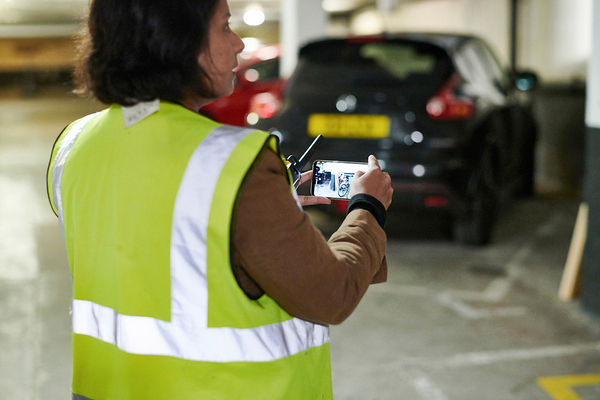
One of the biggest things that the Grenfell fire exposed was that the stay put policy – the piece of advice which instructed residents in their homes in the event of a fire – was not fit for purpose.
The building safety crisis has exposed huge issues in how badly some of our buildings have been built. Either flammable materials or defective fire compartmentation have been found on most blocks, meaning a policy that tells tenants to stay in needed to be replaced.
On thousands of buildings this has been replaced with simultaneous evacuation – in its simplest form, instructions for everyone to evacuate in the first sign of fire.
But this has led to problems, too.
With hardly any buildings having communal alarms to alert people to evacuate in the event of a fire, the National Fire Chiefs Council (NFCC) came up with the idea for a manned alarm system, also known as a waking watch.
Waking watches have proved controversial. Firstly, leaseholders across the country have paid tens of millions of pounds in total on these 24/7 fire patrols, often consisting of several people.
Secondly, there have been huge question marks about their effectiveness. Not only have there been images of waking watch patrollers in their cars or asleep on the job, in high-rise fires many survivors have said the waking watch had little impact in aiding their escape.
The cost and ineffectiveness has slowly forced the government to question the need for it, with significant steps taking place in the last year to drastically reduce the need for them.
This began with the creation of the Waking Watch Relief Fund back in December 2020. This saw the government put in place £30m to fund the installation of communal fire alarms in blocks over 18 metres. A few months later, £5m was added to that fund, with an additional £27m being added to the fund at the start of this year, and the expansion of the fund to allow buildings under 18 metres to apply for funds.
By September 2021, there had been 186 successful applications covering 281 buildings.
But there has also been a drive by the government to undermine the effectiveness of waking watches. Robert Jenrick called waking watch costs a “national scandal”. And this sentiment was shared by Mr Gove on several occasions.
This has also been reflected in the updated guidance published by the NFCC. In its most recent simultaneous evacuation guidance, the NFCC for the first time actively encouraged the end of the ‘one size fits all’ application of waking watches in buildings where there is disproportionate risk.
Changes in the Building Safety Act which place the cost burden of waking watches on building owners rather than leaseholders, has also resulted in a less trigger-happy approach to installing waking watches.
This has all led to a major reduction in the number of waking watches. Data from across English fire and rescue services found that the number of waking watches fell 63% from 773 in June 2021, to 288 in March 2022.
In some buildings, these have been replaced by evacuation managers, which are tasked to aid an evacuation when a fire happens. These are far less expensive.
The insurance issue
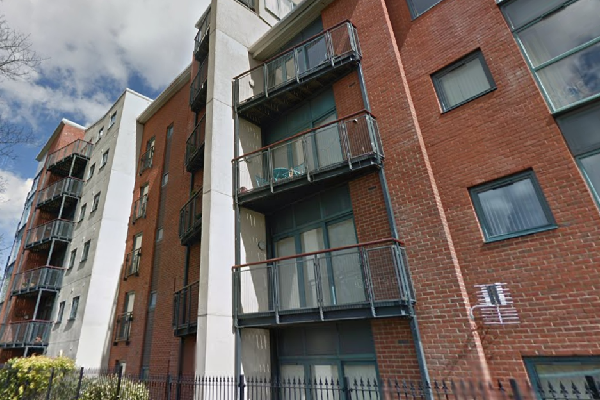
As the building safety crisis has progressed, leaseholders across the country have slowly seen more and more costs added to their already large outgoings.
While remediation bills were initially top of everyone’s concern list, and the monthly waking watch charges were next, the issue of sky-high insurance bills has gained in prominence in recent times.
In 2019, the impact Grenfell had on buildings insurance became apparent. Buildings began to see insurance premiums skyrocket, in many cases seeing five-fold hikes overnight. In one of the most extreme cases, Brindley House in Birmingham saw its premium increase by 1,237% in one year, from £40,000 to £535,000.
Why is this? Well, one because those insurance providers are afraid of the costs if an incident was to happen in one of the buildings.
Mr Betts says that the select committee keeps pushing the industry on why premiums are going up, even if there hasn’t been many claims of this nature yet.
“The answer is, ‘Oh, we need to boost our capital reserves in case we do have to pay out,’” he adds.
The other reason is there has been a massive contraction in the market of those wanting to operate in this area, as well as reluctance from those still operating to issue new deals.
Before Grenfell, it is understood that there were around 20 different insurance providers providing cover for buildings, whereas now there is around six.
This has hit leaseholders in the pocket.
In January, Michael Gove accused the insurance industry of failing leaseholders and this was followed up by a pledge from the Financial Conduct Authority (FCA) to investigate. It produced a report with recommendations on how to fix the market by July.
The July date came and went, with the report not being published until last month.
And within it were some eye-opening revelations, and a raft of recommendations aimed at bringing premiums down. One of the biggest areas of concern for the FCA was the issue of brokers’ commissions.
The report charted how brokers’ commissions usually made up 30% of the total building insurance fees, while in some cases it was over 60%. Even more startling was the fact that in a third of cases, more than 50% of that was being paid back to the managing agents and freeholders that employed them. So the managing agents and freeholders already being paid by leaseholders through service charge for things like finding an insurer, were also getting cash from the insurer they eventually picked.
The government was furious and housing secretary Simon Clarke described them as “kickbacks” and “industry abuses” that needed to stamped out, while the FCA recommended legislation to control remuneration for managing agents and freeholders.
There were other recommendations too, including calls for greater transparency on costs, and a new dispute resolution process where it was easier for leaseholders to challenge sky-high bills. The most significant call, though, was for the sector to come together and “risk pool” the insurance of cladding-affected buildings as a means of bringing them down.
Following similar schemes for flooding and terrorism cover, the building safety risk pool works on the idea that higher costs of the riskier products will be offset by the lower costs of the less risky products, bringing the premium on all buildings down. The FCA has now given the insurance industry two months to come up with a scheme.
However, there is some caution needed around the effectiveness of the changes. The report itself admits that it found no evidence of excessive profitability, and it did not anticipate costs would decrease for most customers after the remedies.
For those currently paying these bills, it looks like the issue will remain. This is leading to real-life consequences. This was shown in the case of Compass Point in Manchester, where residents are currently being threatened with eviction if they do not pay their £250,000 insurance bill, which grew from £12,000 just a few years ago.
The Fire Safety Act and its changes
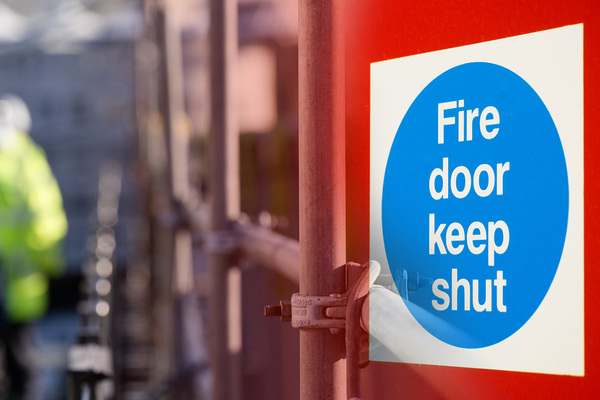
In the immediate aftermath of the Grenfell Tower fire, it was clear that changes needed to be made to the way we approached building and fire safety.
And while ad hoc policies and interventions would help, legislation was needed to ensure that what happened at Grenfell would not be repeated again. The two main bills to carry this legislative reform have come in the form of the Fire Safety Act and the Building Safety Act.
The Fire Safety Act was the first piece of legislation to get voted through parliament last year.
Its journey wasn’t easy, with a game of ping pong between the House of Commons and Lords, with the Lords repeatedly sending it back to ask for amendments to ensure leaseholders were protected from the costs of remediation.
The protections were never written in, but the legislation will have some far-reaching impacts for landlords and residents. A key change that will come into force from January, stipulates that all fire risk assessments will require external walls to be checked as part of the assessment. While on some buildings this will be a box-ticking exercise, your standard fire risk assessor will not be able to do these checks and a competent professional will be needed.
This has led to major questions about whether there will be enough people to do these checks. The EWS crisis has shown just how few qualified people there are to carry out crucial fire safety assessments. In figures given by the Institution of Fire Engineers last year, it was revealed that there were only 212 chartered fire engineers – those most qualified to carry out the checks – in the country.
This could lead to a resource pinch, like the one we have seen with the EWS crisis. And like EWS, it could result in long delays to buildings receiving these crucial safety checks.
But it is not just the external walls that will add further costs on landlords, and for private buildings, leaseholders.
As part of the regulations that come into force in January, landlords will be required to check all fire doors in their blocks over 11 metres in height that open onto and between the common parts to ensure they are safe. If they aren’t, they will need to be remedied or replaced.
“The government has effectively created an entirely new industry, akin to gas safety checks, overnight,” says Mr London. He says the sheer exercise of carrying these out on tens of thousands of fire doors will be huge.
He adds: “The chances are that unless they’re obviously up to modern standards, with FD-rated identification (even though they may have been compliant at the time they were originally installed), landlords will be advised to replace them. The cost of that will be significant”
How will the Building Safety Act change high-rise safety?

The other key piece of legislative change to come out is the Building Safety Act. Sold by the government as the biggest change to building safety in 40 years, the new laws within it are wide-reaching.
It will see the creation of a new Building Safety Regulator, born out of the Health and Safety Executive, which will oversee the safety of blocks at every stage of their lifecycle.
It also brings in the concept of new dutyholders for buildings at various stages of their life, to make it easier to understand who is accountable for failures.
And when failures occur, tougher sanctions are promised, in the form of potential two-year prison sentences for the most egregious cases of people exploiting the system.
But under Michael Gove, the Building Safety Act became important for leaseholders, too. It was through this he brought in new amendments that would protect them from costs.
As mentioned earlier, it now includes clauses which make building owners and developers liable for historic fire safety costs. In what is called the ‘waterfall system’, if developers can’t pay or have gone bust, the liability moves to the building owner, and if they can’t pay, or own under £2m per building, the leaseholder must stump up the cash but with costs capped at £10,000 (£15,000 in London).
Mr Betts welcomes these moves but still thinks there are questions over the number of freeholders that could pay.
“Some of these smaller freeholders, who didn't build these buildings and properly own the freehold for ground rents, most of them are saying if they’re responsible for fire safety, they will go out of business,” he says. “I think that is a gap that needs addressing.”
And in the current climate, £10,000 or £15,000 for something that was not your responsibility, is still a lot of money for leaseholders. And that is not mentioning what impact a bill like this hanging over your property could have on house value, if you come to sell.
But this was not the only amendment put in the bill to protect leaseholders. The Defective Premises Act can now apply retrospectively for 30 years, rather than 10 years.
This means that it is possible to launch legal proceedings against developers and contractors which constructed an unsafe building. There will also be routes to take action against developers that use shell companies to develop buildings, or product manufacturers that ‘mis-sold’ materials.
Inside Housing has been told that developers are now receiving these claims for buildings built as early as the mid-90s but these are largely from landlords with the means to do this, such as housing associations. For individual leaseholders, or groups of leaseholders, though, expensive legal action will not be a possible route.
Mr Spender says: “The new causes of action are welcome but probably not of much use.
“The issue is that in order to benefit from the new causes of action, you need to be able to afford the time and legal fees to pursue a responsible party for, potentially, years before you see any results.
“A lot of buildings don’t have the time or money to wait.”
And, as with many other aspects of the building safety crisis, one apparent solution to a problem is throwing up a lot more issues.
One of the current big problems from legislation in the Building Safety Act is around landlord certificates. Across social media, leaseholders have been raising complaints around landlords not being able to provide a landlord certificate quickly enough.
According to the legislation, landlord certificates must be supplied by landlords to leaseholders when works are being carried out that do not relate to fire safety works, and this should be done in four weeks. However, there is confusion from landlords over what exactly it is needed for.
Jamie Ratcliff, executive director for people and partnerships at Network Homes, says that his housing association and others are struggling to fully understand how it works.
“Nobody’s completely clear on how to fill it out, it’s purpose or exactly what needs to go in it. The requirements are spread across primary legislation and at least two sets of regulations. We’ve had conflicting legal advice and got differing opinions internally,” he says.
“We’re trying to get clarity on that, but my concern is the landlord certificate is just one tiny part of the new requirements, all of which are being introduced at pace.
“The real problem could be a hundred times greater.”
Sign up for our fire safety newsletter
Already have an account? Click here to manage your newsletters

